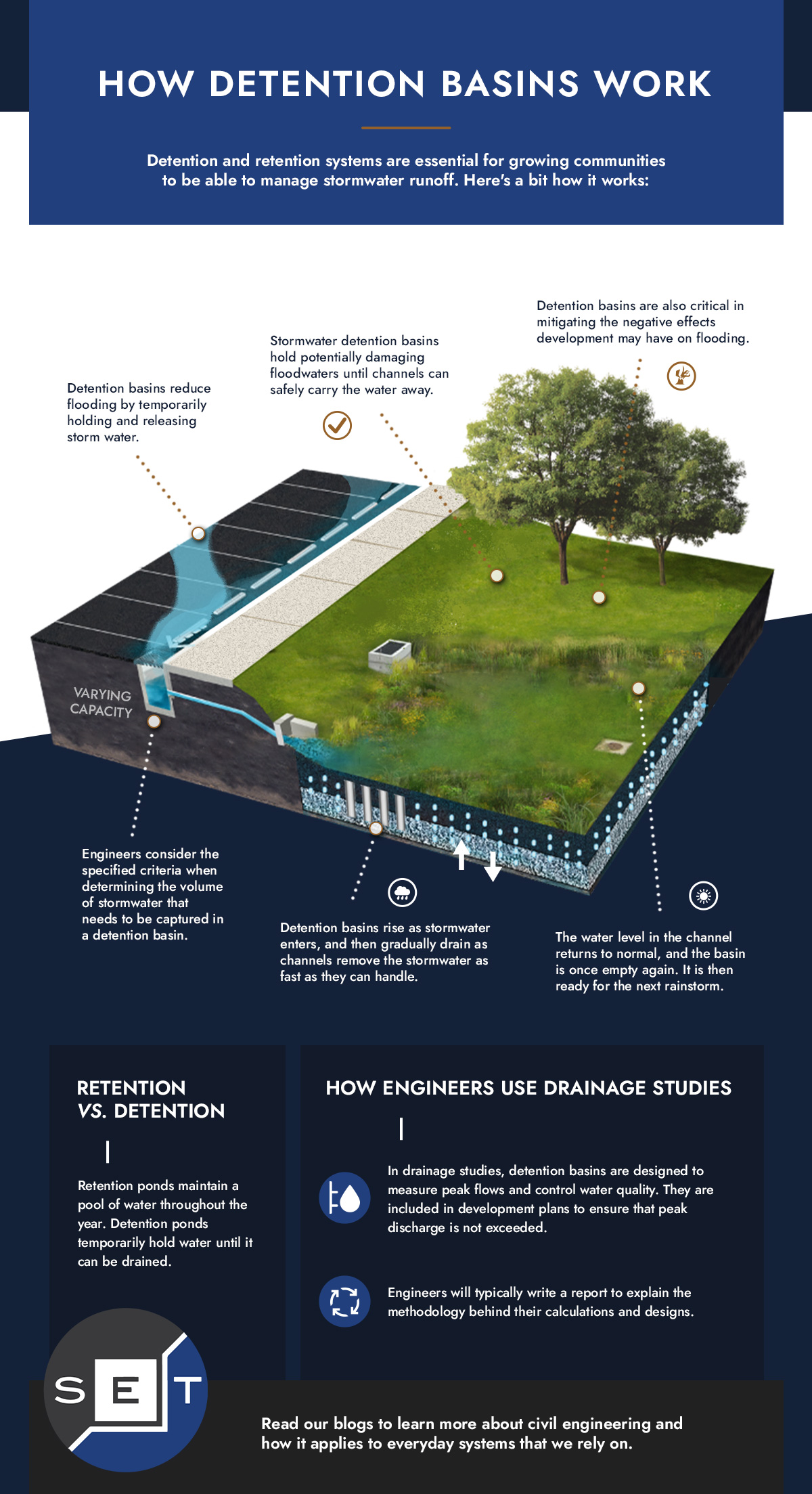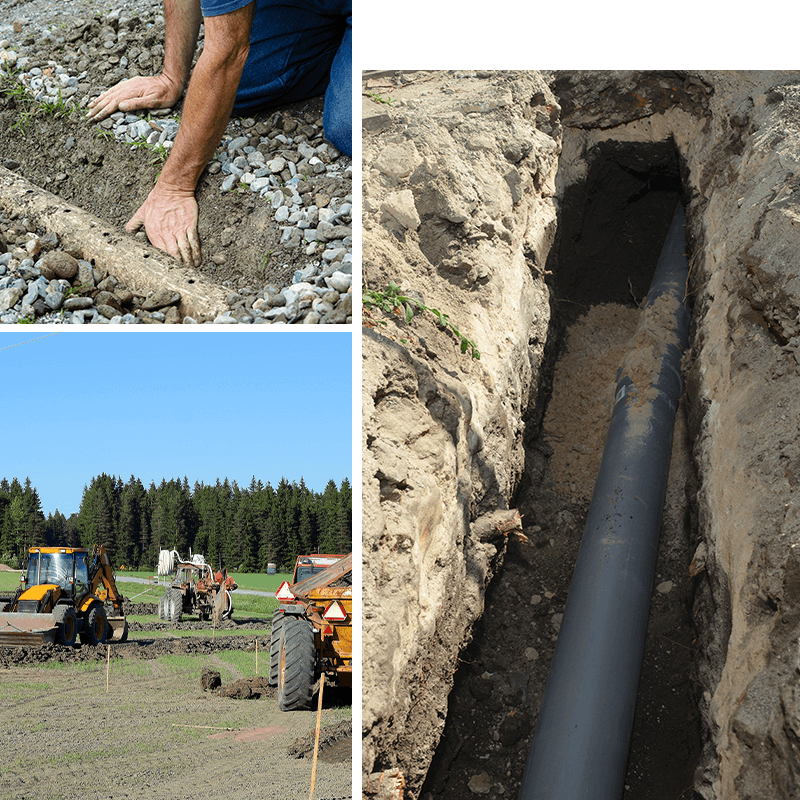Improving Structural Stability
One of the most important issues related to the development of land is improper drainage of surface water. Poor lot grading can result in inadequate surface drainage, ponding, flooding, foundation settlement, and insurance claims. With careful planning and the application of some basic principles, effective and efficient grading and drainage design can be achieved. Give the civil engineers at SET in Durango and Moab a call for more information about grading and drainage design and the steps we take in ensuring a solid foundation for our projects.
Landscape grading refers to shaping the land to direct surface runoff away from structures. Further, the grading must direct runoff towards a lane or street. The goal is to provide proper yard grading for drainage away from buildings. Lot grading and drainage plans have been part of the approval process for residential properties for decades and establish grading relationships between connecting or abutting properties. They serve as the basis for controlling surface runoff.
Drainage planning and site grading rely upon each other in order to prevent moisture issues and structural damage from occurring to buildings and homes. It is the responsibility of site grading to ensure that both precipitation and rainwater can effectively flow away from the building in order to prevent it from leaking into below-grade assemblies and from accumulating into pools and puddles.
An essential component of drainage design is water detention and water retention ponds, which work to hold water effectively. The construction of adequate storm drainage basins mitigates both existing and future flooding problems and is essential in urban growth management. Designing water systems is critical for civil engineers, as it has to do with maintaining the integrity of structures and the land’s ability to manage water flow.

The Importance of Surface Water Management
Proper drainage planning and site grading involves a lot of strategizing and thought given that many homes and buildings have neighboring lots. Without sufficient planning, water would end up flowing away from one lot and into the next, creating significant water damage and surface water issues. By integrating site grading and drainage plans throughout neighborhoods, these issues are prevented.
Surface water management is used to prevent improper drainage from creating serious physical damage to these types of facilities through erosion. Not only can poor water drainage cause long-term structural damage to buildings and facilities, but it can also cause water to accumulate and attract wildlife.

The preparation of a grading plan calls for a licensed civil engineer that has the skills and knowledge in grading and drainage design. You need an engineer who knows exactly how to create a grading plan and how to execute it. If you have more questions on grading plans, then contact the civil engineering team at SET Engineering in Durango and Moab.
The preparation of a grading plan calls for a licensed civil engineer that has the skills and knowledge in grading and drainage design. You need an engineer who knows exactly how to create a grading plan and how to execute it. If you have more questions on grading plans, then contact the civil engineering team at SET Engineering in Durango and Moab.
